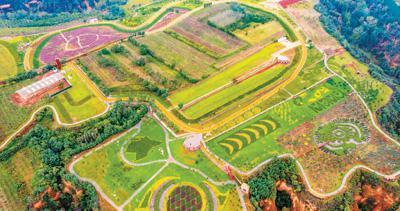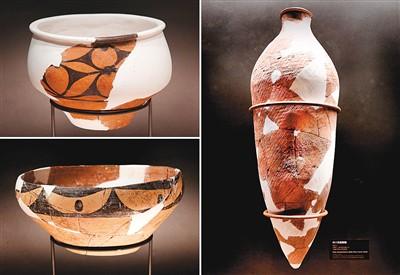Archeological sites become hit with tourists in China

Photo shows the Yangshao Village national archaeological park in central China’s Henan Province. (Photo/Du Jie)
A number of archeological sites have been attracting a great deal of attention from the public in recent years, becoming popular tourist destinations for a variety of reasons.
Archaeological-themed tourism, archeological parks, and museums are providing an important space for people to experience the profoundness of Chinese civilization.
A TV program that brought viewers on an in-depth journey of exploration of some of the country’s major archaeological discoveries was recently aired by China Media Group. In the latest episode, it took viewers to the Archaeological Ruins of Liangzhu City in Hangzhou, east China’s Zhejiang Province. The Archaeological Ruins of Liangzhu City are a testimony to the existence of the 5,000-year Chinese civilization.
After watching the show, a young woman named Meng Xin decided to visit the site at the weekend. “Through the show, I came to realize that people had already developed an advanced civilization and wisdom in ancient times,” said Meng.
According to statistics from Mafengwo, an online travel agency in China, in 2021, archeological parks became increasingly popular destinations for young tourists.

Photo shows pottery wares unearthed at the Miaodigou ruins site in Sanmenxia City, central China’s Henan Province. (Xinhua/Li An)
“That archeological parks and museums are becoming popular tourist destinations is attributable to multiple reasons, including efforts made by the government to draw people’s attention to these cultural tourism products, people’s growing demand for cultural tourism products and an expanding supply-end that can keep up with demand,” said Zhang Yang, an associate research fellow with the China Tourism Academy.
“In the past, archeological sites were not easily accessible for most people. But these days, quite a lot of cultural and museum resources have been turned into tourist products that are more accessible, understandable, and affordable,” Zhang further explained.
Wu Ruoshan, deputy director of the cultural tourism policy research center at China University of Labor Relations, pointed out that the reason why archaeological-themed tours are popular is that they bring tourists closer to cultural relics, and give them a chance to take a closer look at historical sites and ruins. The second reason is that archaeological-themed tours mostly involve outdoor travel activities, giving tourists an opportunity to learn more about the culture of a specific place while appreciating its natural beauty. The third reason is that archaeological-themed tours are seen as mysterious, and constantly attract tourists who want to explore the unknown.
China has turned a total of 36 major archaeological sites into State-protected public parks, and seven archaeological sites located in the country have been inscribed on the international heritage list. According to a plan for the preservation of cultural relics and related technological innovation during the 14th Five-Year Plan period (2021-2025), the country aims to build 10 to 15 national archeological parks by 2025.
The plan also said that China will make efforts to turn cultural relic protection units and museums into tourist destinations, issue a list of travel routes featuring cultural relics, and promote cultural relic study tours, experience-oriented travel routes and high-quality travel routes.
Photos
Related Stories
- 99,000-yr-old ivory shovel believed to be oldest in China
- Drainage pipes, ancient roads found in NW China's Shaanxi
- World's earliest coin workshop found in central China's Henan
- 2000+ cultural relics unearthed at 2,000-year-old Chinese tombs
- New discoveries at Sanxingdui Ruins shed light on unified, diverse origins of Chinese civilization
- 5,000-yr-old ruins found at SW China construction site
Copyright © 2021 People's Daily Online. All Rights Reserved.










